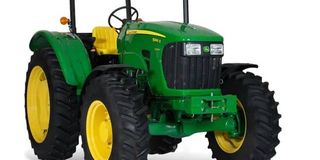Ulanga farmer wins Sh53 million tractor for top cotton yield

What you need to know:
- He received a brand-new tractor worth Sh53 million from the Tanzania Cotton Board (TCB) as part of its programme to promote productivity through modern farming techniques, adherence to expert guidelines, and the use of improved seed varieties.
Morogoro. A farmer from Iputi Village in Ulanga District, Mr Alifa Bushiri, has been named the Eastern Zone’s best cotton producer after harvesting 2,723 kilogrammes per hectare in the 2024/25 season.
Mr Bushiri, 57, received a brand-new tractor worth Sh53 million from the Tanzania Cotton Board (TCB) as part of its programme to promote productivity through modern farming techniques, adherence to expert guidelines, and the use of improved seed varieties.
He said he did not expect the recognition until he received an invitation to attend the National Farmers, Livestock Keepers and Fishers Exhibition held in Dodoma, where he was officially announced the winner.
“This tractor will greatly ease farm preparation for the coming season. I have been growing cotton, maize and rice, but each year I hired a tractor at Sh60,000 per hectare. For my five hectares, that cost Sh720,000. I will no longer incur that expense,” he said.
From his five hectares, Mr Bushiri harvested 13,615 kilogrammes of cotton, applying the 60-30 seed spacing system recommended by researchers and following strict schedules for pest control, including the management of jassids.
TCB Senior Agriculture Officer, Mr Alfonce Ngawagala, said farmers are encouraged to follow ten key principles for successful cotton cultivation. These include early land preparation, use of farmyard manure, correct row spacing, thinning, timely weeding, and spraying pesticides.
“Following these principles can enable a farmer to achieve yields of more than 1,500 kilogrammes per hectare,” he said.
Cotton researcher from the Tanzania Agricultural Research Institute (TARI), Mr Methusela Obedy, named the seven major pests affecting the crop as red bollworms, cotton bollworms, aphids, whiteflies, thrips, small stainers, and field rats. He stressed the importance of early control to protect yields.




